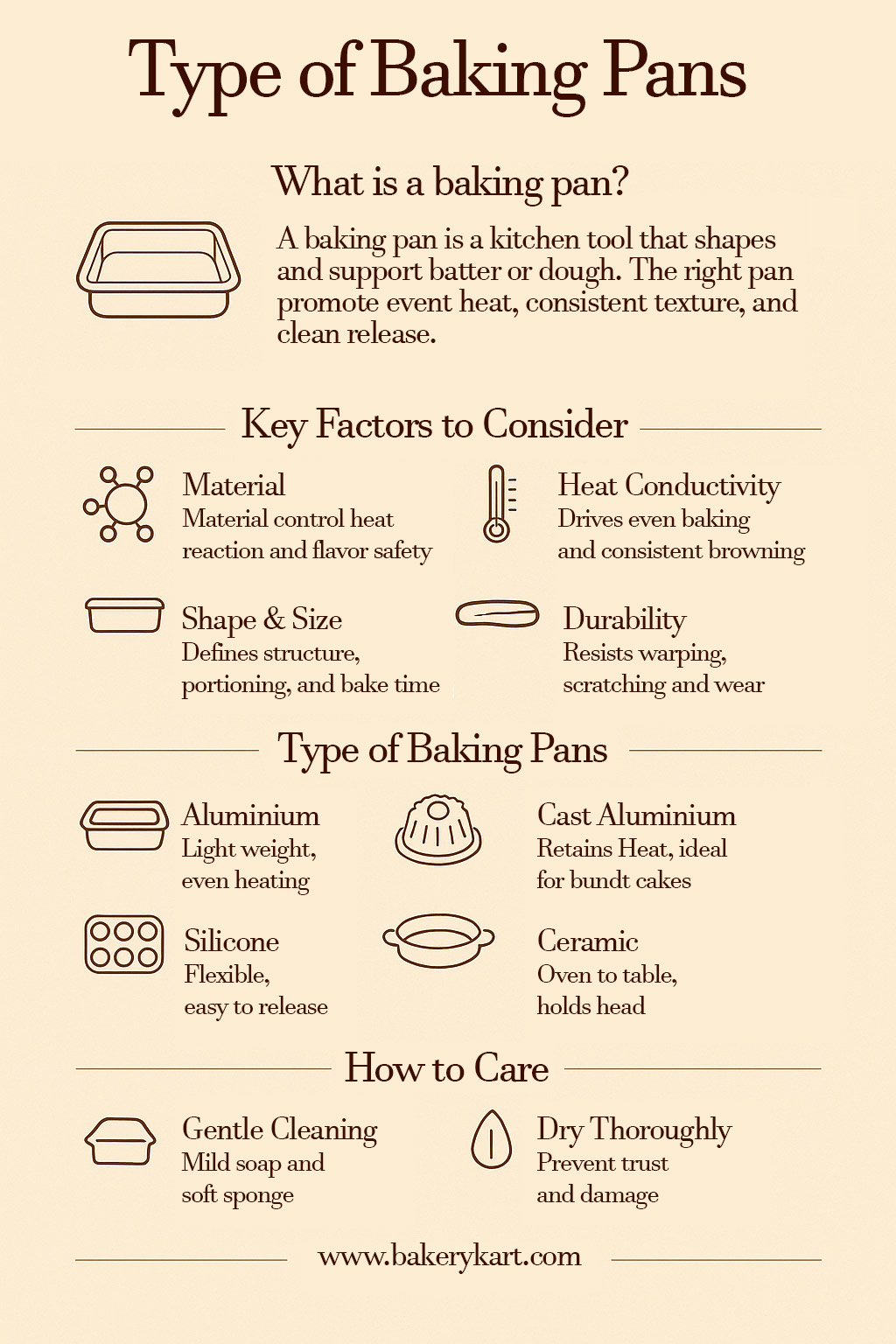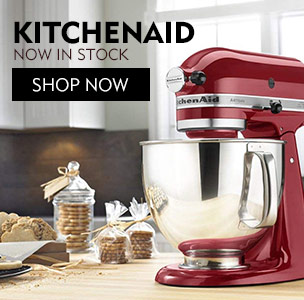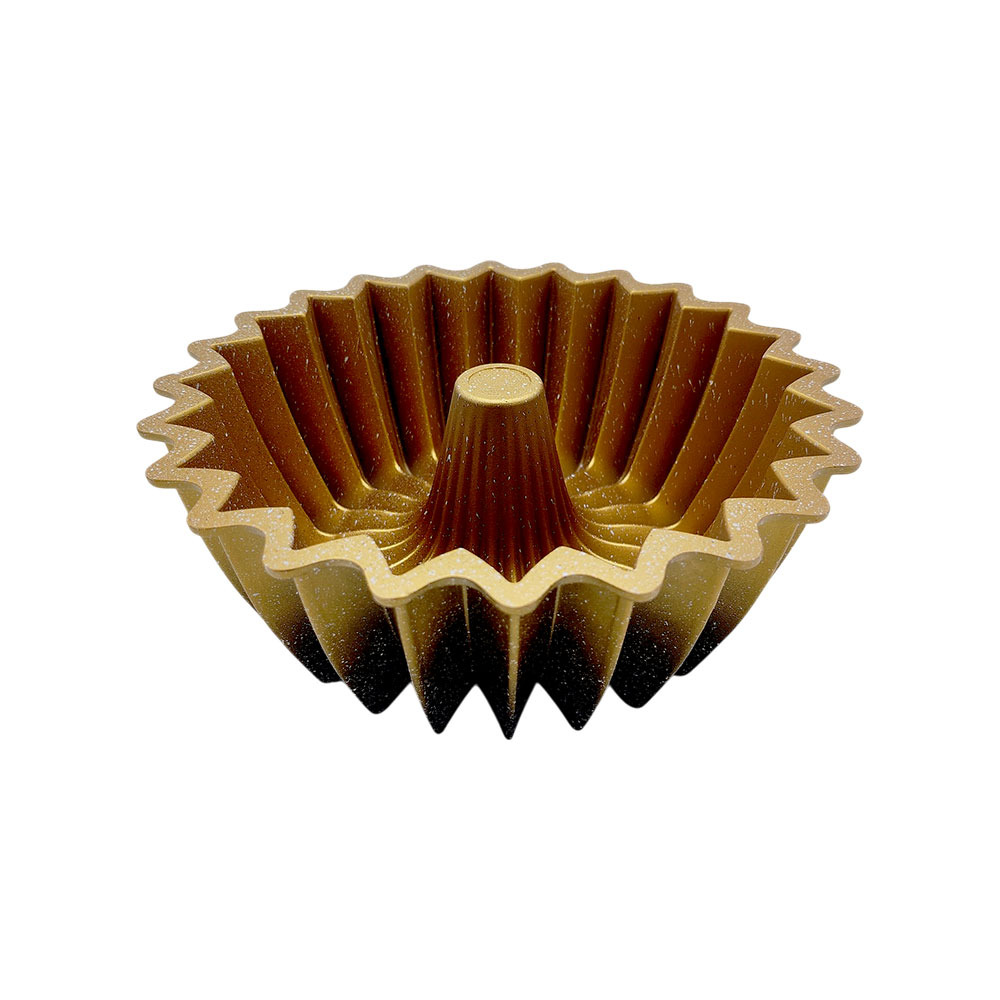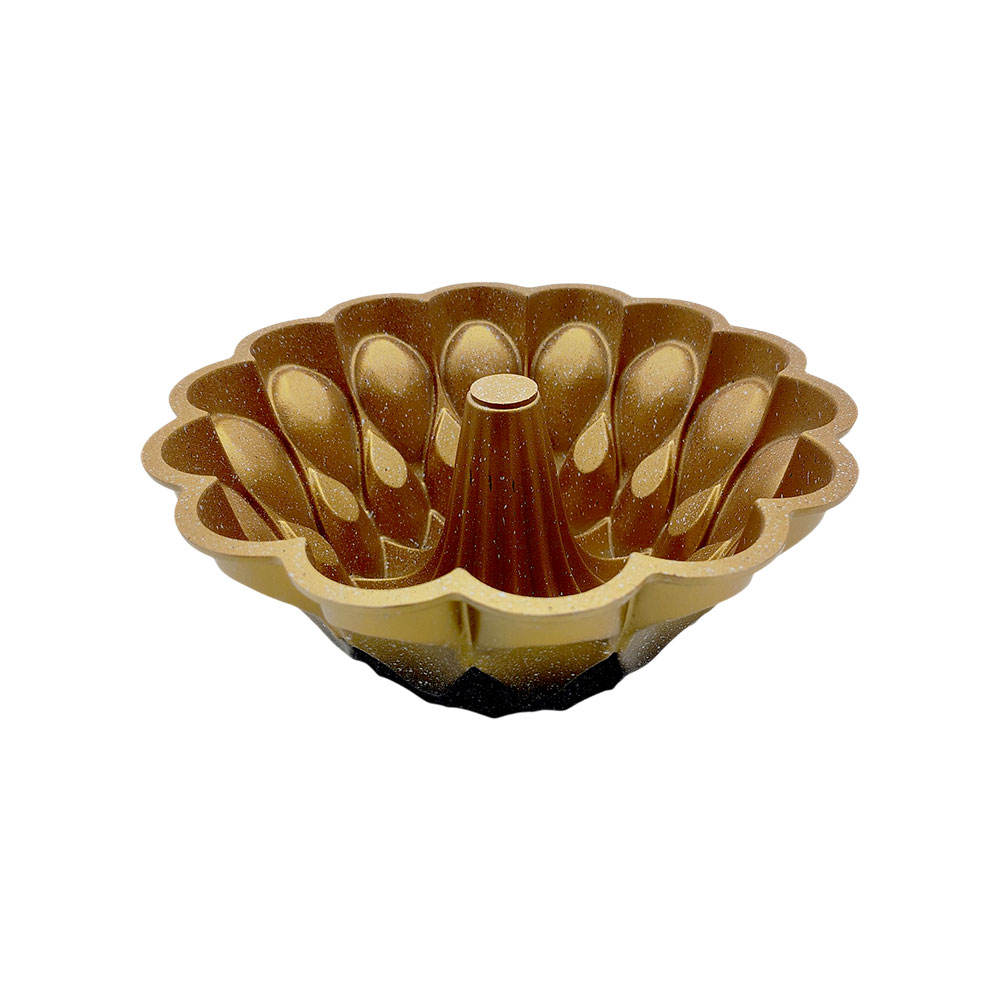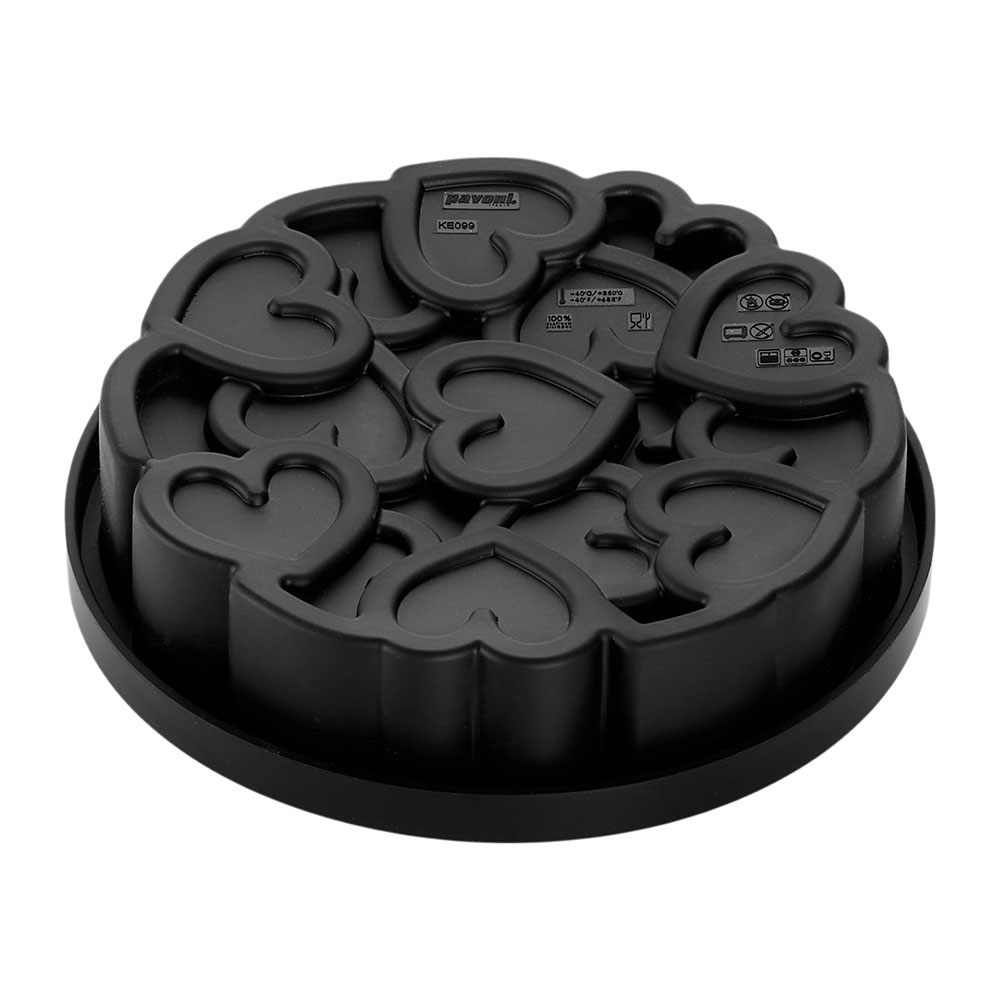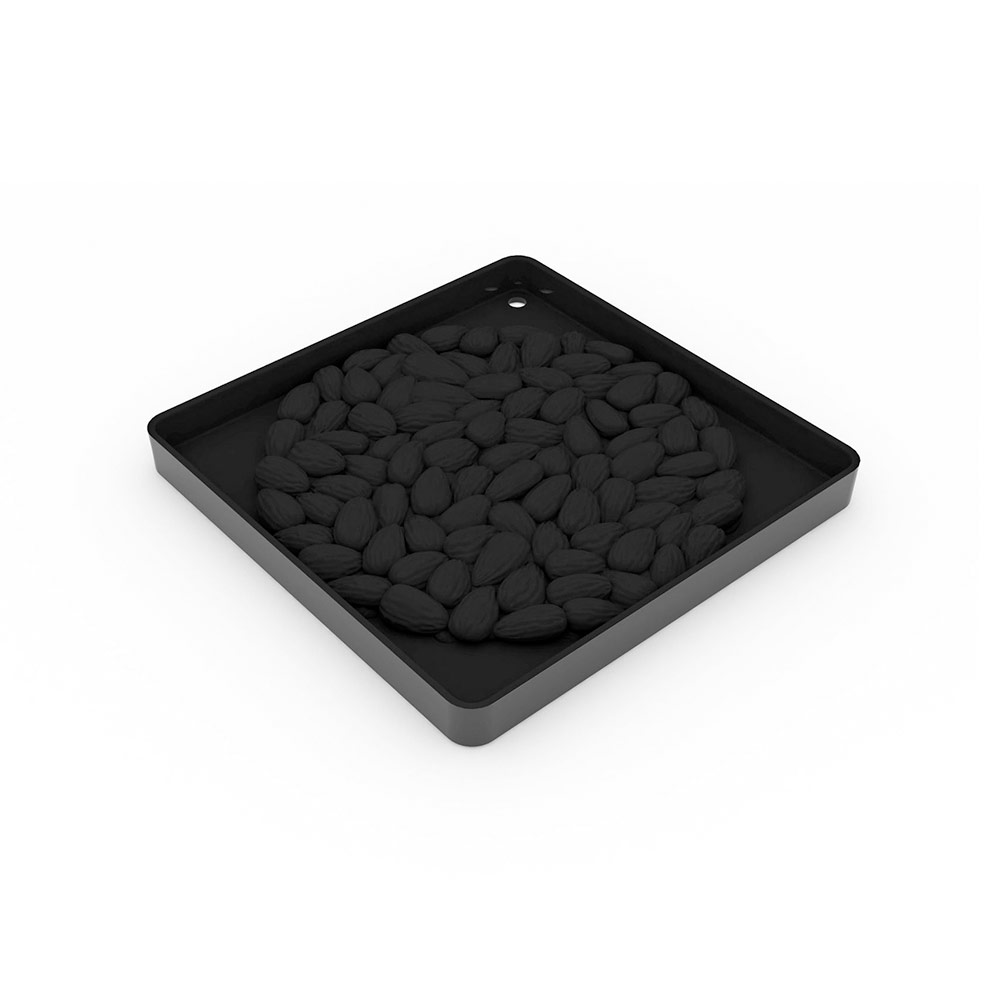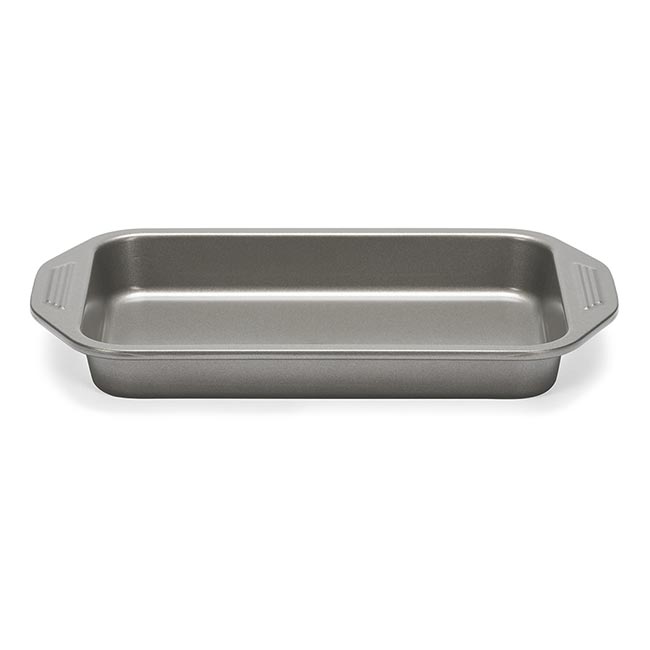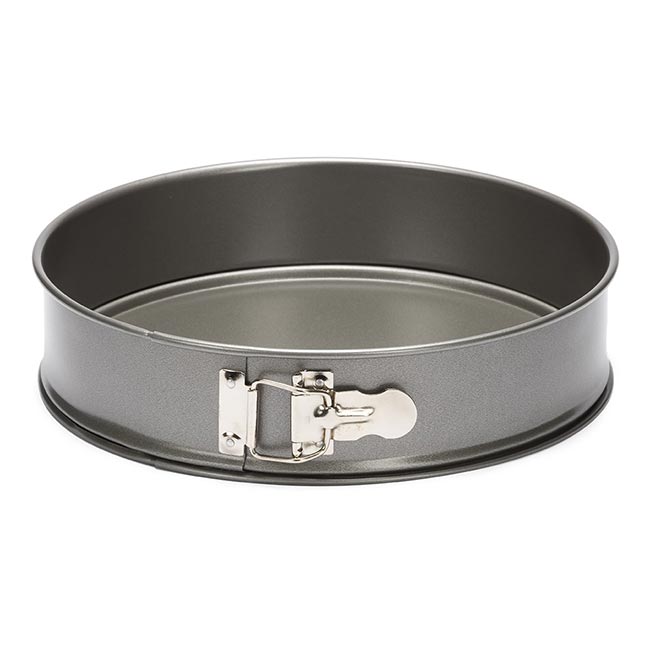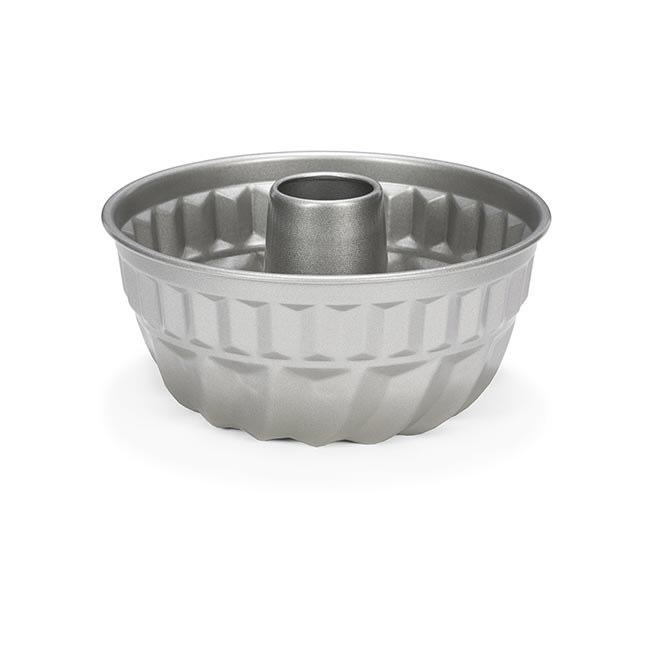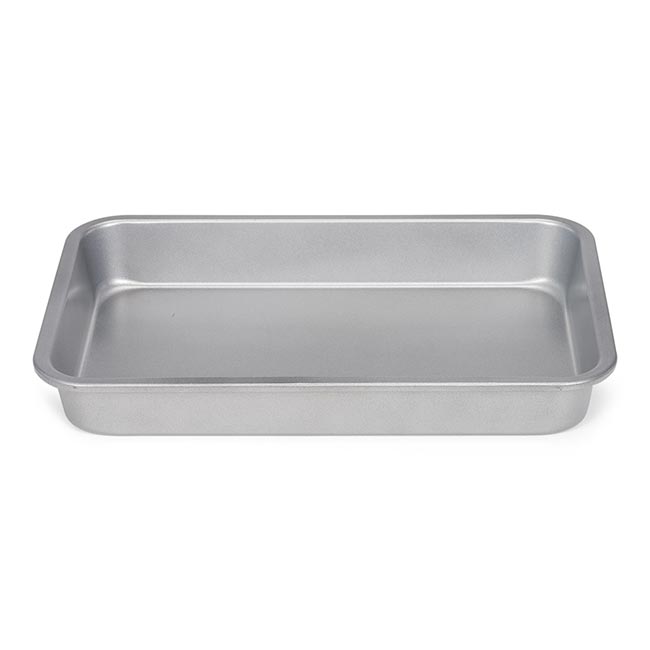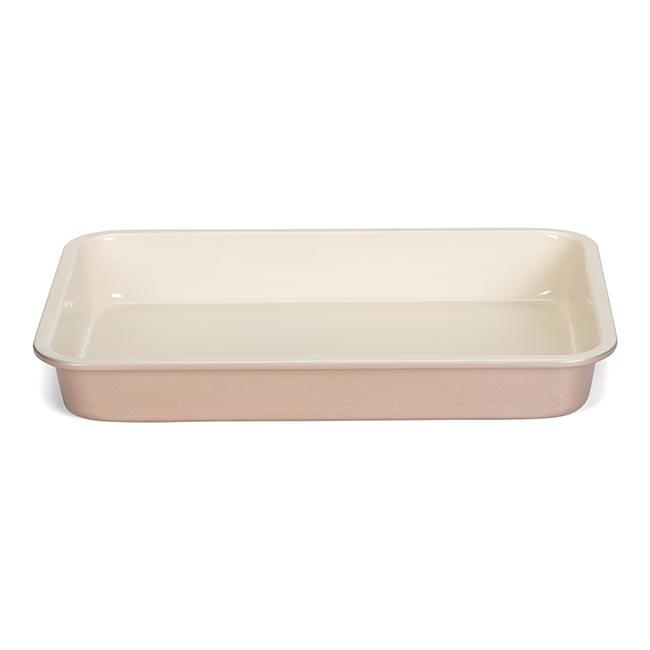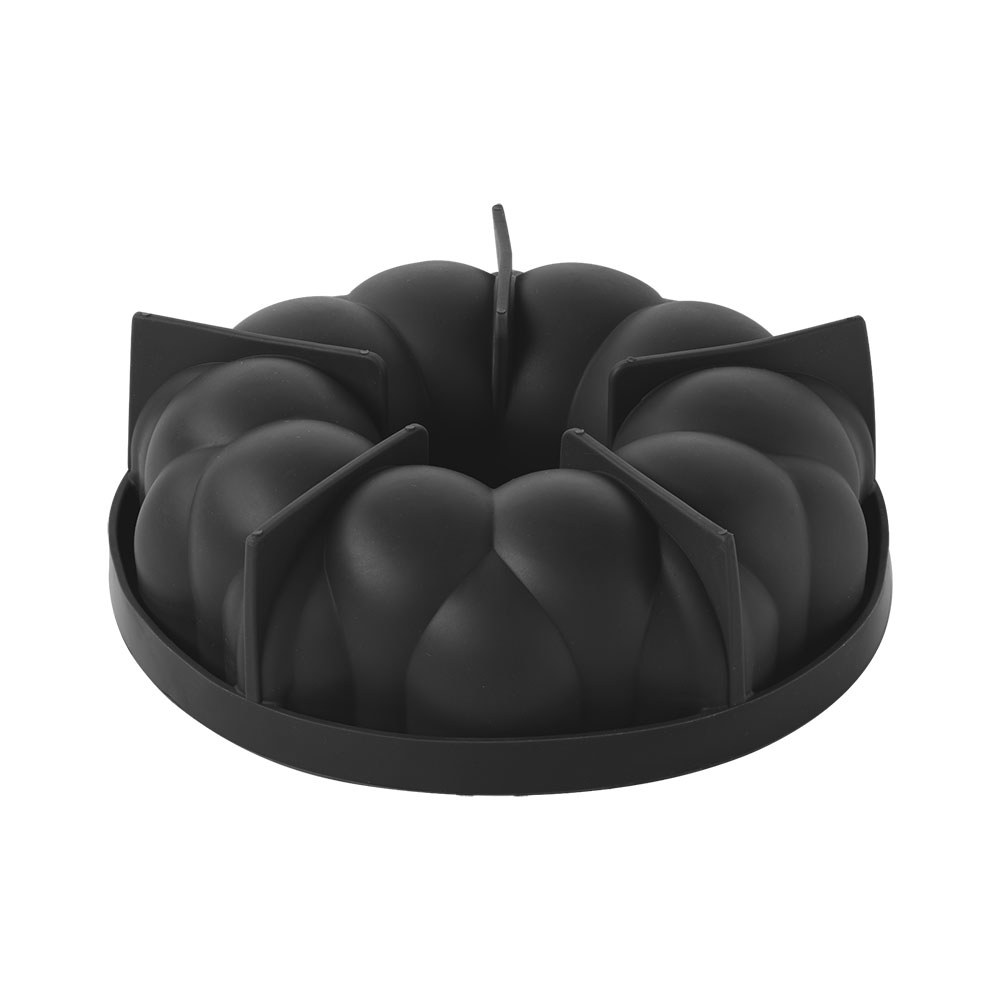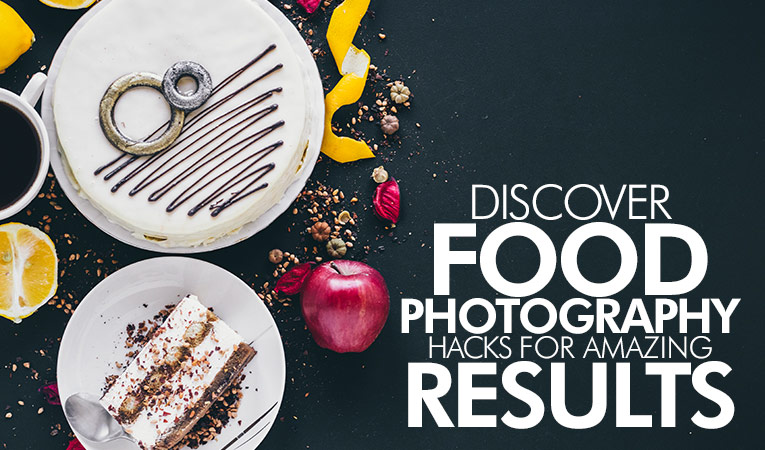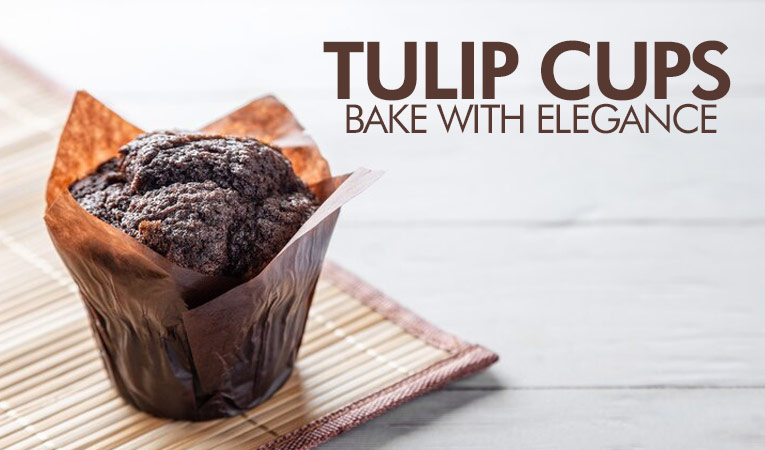Types of Baking Pans: Your Ultimate Baking Guide
21-08-2025
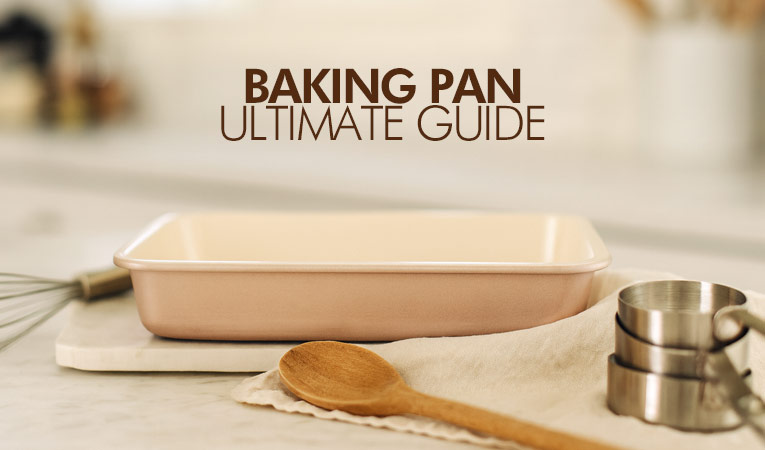
Baking combines imagination with accuracy, but success relies not only on ingredients or recipes. The baking pan you select plays a defining role in how your creations turn out. It influences the way heat moves through batter, how evenly textures form, and how beautifully the finished product presents itself on the table. A carefully chosen pan can make the difference between a cake that rises with grace, bread that develops a crisp crust, or brownies that hold the perfect fudgy bite. Understanding these details is what helps bakers move with confidence in the kitchen.
A quality baking pan is never just a container. It is a tool that guides the process, controlling heat distribution, surface browning, and ease of release. Aluminum provides excellent conduction, helping cookies and cakes bake evenly. Glass retains warmth longer, making it ideal for gooey brownies served fresh from the oven. Silicone molds offer flexibility and simple release, while cast aluminum ensures impressive detail for Bundt cakes. Each choice serves a purpose, and making the right one can elevate the simplest recipe into something memorable.
Consistency is what bakers strive for, and pans provide the foundation for it. Depth, shape, and material all influence timing, structure, and presentation. A springform pan makes cheesecakes possible without damage, while specialty pans like tart tins or Bundt molds bring elegance to celebratory desserts. Recognizing these roles not only saves effort but also minimizes the risk of uneven results.
This guide explores categories of pans, their strengths, and how to align them with recipes. Along the way, you will see how the best baking pans streamline preparation, support creativity, and deliver results worth sharing. By the end, you will feel equipped to select the right tools for every occasion and grow a collection that reflects both skill and imagination.
Why Baking Pans Matter in Every Kitchen?
Every baker has faced the disappointment of removing something from the oven only to find that it baked unevenly, browned too heavily on one side, or stuck to the surface even after careful preparation. These challenges often have less to do with a recipe and more to do with the tool chosen for the job. The importance of selecting the right baking pan is often underestimated, yet it has a direct influence on the quality, consistency, and presentation of every bake.
The pan you choose is responsible for the way heat flows through batter or dough. Different materials respond uniquely to oven temperatures, which means the outcome can vary dramatically. Aluminum is appreciated for its ability to heat quickly and evenly, producing consistent cakes and cookies. Glass requires more time to heat but excels at retaining warmth, which makes it a reliable choice for brownies and casseroles. Silicone is valued for its flexibility and quick release, ideal for molded desserts, while stainless steel remains a staple in professional kitchens due to its strength and resistance to warping. Understanding these qualities helps bakers make informed decisions and achieve predictable results.
Equally important is the way pans shape the final product. A round tin creates elegant layers for celebration cakes, while a loaf tin defines the structure of bread. Even the depth of a pan can decide whether a cake bakes with a light airy texture or a dense moist crumb. Presentation is always linked to performance, and the correct choice ensures baked goods look professional and taste exceptional.
Beyond performance and appearance, efficiency also matters. Quality pans reduce baking time, resist wear, and provide long-term value. For bakers who take their craft seriously, appreciating the role of the right pan is essential to creating results that consistently inspire confidence and satisfaction.
Key Factors to Consider When Choosing Baking Pans
Selecting the right tin goes beyond simply picking what is available in your cupboard. Every recipe deserves a thoughtful choice because baking pans are not interchangeable. The material, shape, and design of a pan can transform how a recipe performs and how the final product turns out. Knowing what to look for when building your collection of pans helps you bake smarter, avoid disappointment, and create consistent results.
Here are some of the most important factors to consider when choosing the best pan for your baking projects:
- Material and Heat Conductivity : Aluminum conducts heat quickly and evenly, stainless steel offers durability, glass retains warmth, and silicone provides flexibility. The material determines how consistently your recipe bakes.
- Shape and Size : Round pans are ideal for layered cakes, square pans for brownies, loaf pans for bread, and specialty pans for desserts. Shape controls appearance and consistency.
- Non-Reactive Properties : Non-reactive pans such as stainless steel, ceramic, or glass prevent metallic flavors from developing when baking with acidic ingredients like lemon or tomato-based fillings.
- Durability and Maintenance : Stainless steel and cast aluminum pans last for years with proper care. Non-stick and silicone require gentler handling to preserve performance and prevent scratches.
- Ease of Release : Non-stick coatings, silicone flexibility, and springform designs all ensure your bakes release without breaking. Smooth release means better presentation and less waste.
- Recipe-Specific Needs : Every bake has unique requirements. Cheesecakes thrive in springform pans, Bundt cakes need decorative molds, while artisan bread relies on heat-retaining cast aluminum.
- Oven-Safe Limits : Some materials withstand higher heat better than others. Cast aluminum, stainless steel, and glass perform reliably at high temperatures, while silicone requires monitoring for stability.
Making the right decision means evaluating the demands of your recipe and the strengths of your pan. By balancing performance, durability, and ease of use, you create a foundation for stress-free baking. Investing in high-quality options ensures your pans work with you rather than against you, helping you deliver consistent results every time.
Types of Baking Pans and Their Applications
Baking is not only about following recipes but also about choosing the right tools that make those recipes shine. Among these, baking tin stand out as the foundation of consistency, texture, and presentation. There are several types of baking pans, each designed to serve a unique purpose, and knowing which one to use can elevate your baking results from ordinary to exceptional. Whether you are baking cakes, bread, pies, or tarts, the pan you select determines how well your creation bakes and how it looks when served.
Aluminum Baking Pans
Among the most versatile types of baking pans, aluminum is known for its even heat distribution and lightweight design. Perfect for cakes, cookies, and bars, it delivers consistent results. However, it is reactive with acidic ingredients, so lining or coating is often recommended to preserve flavor and texture in delicate recipes.
Cast Aluminum Baking Pans
Cast aluminum pans are heavier and provide excellent heat retention, making them popular for Bundt cakes and decorative desserts. Their durability and non-stick coatings allow easy release, ensuring intricate designs remain intact. These pans are reliable for recipes requiring precise structure, combining beauty and performance for impressive results every time.
Stainless Steel Pans
Stainless steel is among the durable baking tins. It is rust-resistant, long-lasting, and ideal for heavy-duty baking or roasting. Though it lacks the heat conductivity of aluminum, it excels in professional kitchens where durability and resistance to warping are critical. Sheet pans and roasting trays are common stainless steel choices.
Glass Pans
Glass pans are non-reactive and perfect for recipes where monitoring browning is essential. They retain heat longer than metal pans, keeping baked goods warm even after removal. Popular for casseroles, lasagna, and brownies, glass pans offer oven-to-table appeal but require additional attention during preheating due to slower heat conduction.
Ceramic Pans
Ceramic pans combine beauty with function, making them oven-to-table favorites. Known for even heat distribution and non-reactive properties, they are perfect for pies, crumbles, and gratins. Ceramic pans create a rustic presentation and maintain warmth, though they require careful handling to prevent chipping, ensuring both elegance and performance in home or professional kitchens.
Silicone Baking Pans
Flexible and colorful, silicone pans are innovative types of baking pans widely used for cupcakes, muffins, and molded desserts. They resist sticking, withstand high oven temperatures, and require no greasing. Their lightweight design makes them easy to store, though they can feel less sturdy compared to metal pans during transport or oven handling.
Non-stick Baking Pans
Non-stick pans are valued for their easy release and low-maintenance cleanup, making them ideal for delicate cakes or pastries. With smooth surfaces, they allow effortless presentation of baked goods. However, they require gentle care to preserve the coating, avoiding scratches from sharp tools. Perfect for those seeking efficiency without compromising results.
Springform Pans
Springform pans feature removable sides, making them essential for cheesecakes and layered tortes. They prevent damage during release, keeping delicate desserts intact. Their locking mechanism ensures secure baking while allowing effortless removal once the dish is set. These pans are indispensable in any baker’s toolkit for elegant, presentation-worthy recipes.
Tube Pans and Angel Food Cake Pans
These pans feature a central tube that ensures even heat distribution, making them ideal for sponge cakes, chiffon, and angel food cakes. Their tall sides support airy batters, creating volume and structure. The removable base often included in tube pans simplifies release, ensuring light, fluffy cakes maintain their perfect height.
Specialty Pans
Specialty pans include Bundt, tart, and madeleine pans designed to add artistry and uniqueness to baked goods. These pans highlight the creativity of bakers by offering distinctive shapes and textures. Often made with durable materials, they combine functionality with visual appeal, elevating desserts into memorable centerpieces perfect for special occasions or professional displays.
Each category of baking tin plays a specific role in bringing recipes to life. By exploring the variety of types of baking pans available, bakers can match the right pan to the right recipe and consistently achieve results that not only taste delicious but also look stunning. This knowledge forms the foundation for a well-equipped kitchen where creativity thrives and professional-quality results become the norm.
How to Care for Your Baking Pans?
Investing in high-quality baking mould is only part of the journey to successful baking. Proper care and maintenance extend their life, protect their performance, and keep your baked goods looking flawless. Caring for your pans ensures that each time you bake, your tools are ready to deliver consistent results without compromise.
- Gentle Cleaning - Always allow pans to cool before washing to prevent warping. Use warm water and mild soap with soft sponges instead of abrasive scrubbers that damage surfaces.
- Avoid Harsh Chemicals - Strong detergents or bleach can wear down coatings and finishes. Choose gentle cleaning solutions that preserve non-stick and protect the integrity of stainless steel or ceramic.
- Dry Thoroughly - Never store pans while damp. Moisture causes rust in metal pans and weakens ceramic finishes. Always towel dry or air dry completely before stacking.
- Protect Non-stick Surfaces - Use silicone or wooden utensils with non-stick pans. Sharp or metal tools leave scratches that reduce effectiveness and shorten the pan’s usable life.
- Proper Storage - Stack pans carefully with padding, or store vertically to avoid dents or scratches. Silicone pans can be rolled or folded without damage for space efficiency.
- Recognize Signs of Wear - Warping, flaking coatings, or persistent sticking signal it is time to replace pans. Old pans compromise results and can ruin even perfectly prepared batters.
Taking care of pans is not just about cleanliness, it is about performance. A pan that is well-maintained will always give you reliable results, protect your recipes, and provide professional-level outcomes. By following simple practices, you ensure your pans remain trustworthy partners in your kitchen for many years.
Best Baking Pans Recommended by Bakerykart
At Bakerykart, we believe in equipping bakers with the finest tools that guarantee professional results and elevate every recipe. Our carefully curated range of baking pans is selected for durability, performance, and creativity, ensuring you can deliver stunning bakes every time. Here are some of our top-selling products that professional chefs and passionate bakers love.
-
Wavy Ridge Cast Aluminum Bundt Pan
This cast aluminum Bundt pan delivers exceptional heat retention and crisp detailing, making your cakes stand out with elegant ridges. Its non-stick surface ensures easy release and effortless cleanup, perfect for show-stopping desserts that combine artistry with performance. A must-have pan for bakers who love creative presentation and consistent results.
-
Geometric Crown Cast Aluminum Pan
Designed with bold geometric patterns, this cast aluminum pan ensures even baking and impressive structural detail. Its durable build resists warping, while the non-stick coating provides flawless release. Perfect for Bundt cakes and decorative bakes, it transforms simple batters into professional-quality creations with ease, making it a favorite among passionate bakers.
-
Eros 2.0 KE099S Cake Mould - Pavoni
This premium silicone entremet mould from Pavoni delivers flawless shapes with smooth detailing. Perfect for layered cakes and creative patisserie, it offers flexibility, easy release, and stunning presentation. Resistant to high temperatures, it supports complex desserts, making it a top choice for professionals crafting elegant entremets and artistic masterpieces with precision.
-
Pavoni Top 25 Hazelnut Shape
Create bite-sized elegance with this Pavoni silicone mould featuring hazelnut shapes. Designed for precision, it enhances creativity in petit fours, bonbons, and decorative garnishes. Heat-resistant and flexible, it ensures easy release and consistent detailing, helping chefs craft sophisticated desserts and stylish presentations with minimal effort. A true essential for patisserie innovation.
-
Brownie Pan 28 x 18 cm
Perfect for dense and chewy brownies, this versatile pan provides uniform heat distribution and consistent results. Its sturdy build ensures durability, while the non-stick surface prevents sticking. Ideal for everyday baking, it is a go-to pan for brownies, bars, and dessert squares that deliver professional results with home-baked warmth.
-
Springform Pan Dia 22 cm
This classic springform pan is essential for cheesecakes, tortes, and delicate desserts. The removable base allows seamless release, preserving shape and texture. Its durable construction ensures long-term use, making it a staple in professional and home kitchens alike for elegant desserts that require gentle handling and flawless presentation every time.
-
Loaf Pan 23 cm
Designed for perfect bread loaves, this pan delivers uniform structure and golden crusts. Sturdy and reliable, it is also excellent for pound cakes and quick breads. Its durability and ease of use make it indispensable in every kitchen, supporting bakers who want consistent results and professional-quality loaves with every bake.
-
Bundt Cake Pan Dia 22 cm
This 22 cm Bundt cake pan is designed to create elegant ring-shaped cakes with intricate detailing. Made from durable materials with non-stick coating, it guarantees consistent results and easy release. Perfect for celebratory desserts, it adds artistry to any bake while offering practicality for both home bakers and professionals.
-
Mini Loaf Pan 9 cm - Patisse
Compact yet efficient, this mini loaf pan by Patisse is ideal for individual bread loaves, cakes, or desserts. Its sturdy build ensures durability, while the non-stick coating guarantees easy release. Perfect for portioned baking, it allows bakers to create personalized servings that look professional and taste consistently delightful every time.
-
Brownie Pan 28 x 18 cms
Designed for fudgy brownies and dessert squares, this pan distributes heat evenly to ensure every slice bakes to perfection. Its non-stick surface guarantees easy release, while its strong construction withstands frequent use. A practical addition to any kitchen, it makes everyday baking more reliable and presentation-worthy with professional consistency.
-
Brownie Pan with Ceramic Coat 28 x 18 cm
Crafted with a durable ceramic coating, this brownie pan ensures healthier baking with less need for greasing. It combines durability with convenience, offering excellent heat distribution and effortless release. Perfect for brownies, blondies, and dessert bars, it is an eco-friendly, performance-driven choice for bakers who prioritize both health and quality.
-
Pavocake Mould KE036 - Pavoni
This Pavocake silicone mould by Pavoni is ideal for contemporary entremets and artistic cakes. Its flexible design supports high-temperature baking while ensuring easy release. Known for precision detailing, it allows chefs and bakers to experiment with creativity and presentation, producing visually striking desserts that combine professional finish with ease of handling.
Each of these baking tin is carefully selected to inspire creativity and ensure dependable results. From cast aluminum Bundt pans to innovative silicone moulds, Bakerykart’s collection empowers bakers to experiment confidently. Investing in these professional-grade tools guarantees consistency, elevates presentation, and allows you to create memorable desserts that impress every time.
FAQs on Types of Baking Pans
1. What are the most common types of pans every baker should own?
The most common types of pans are round cake pans, loaf pans, springform pans, and brownie pans. Each serves a unique purpose, ensuring you can bake cakes, breads, and desserts with the right structure, texture, and finish. Owning these basics forms a strong foundation for versatile baking.
2. Which materials are considered best for baking pans?
Aluminum is popular for its even heat conduction, stainless steel for durability, and silicone for flexibility and easy release. Glass and ceramic are excellent for oven-to-table baking, while cast aluminum is highly valued for decorative Bundt cakes. Each material has strengths, so the best choice depends on your recipe.
3. How do I choose the best pan for my recipe?
Consider heat distribution, size, and design. For airy sponge cakes, use tube pans. For cheesecakes, springform pans are essential. For everyday baking, aluminum or non-stick pans provide consistency. Matching pan material and shape to recipe type ensures both structure and flavor meet your expectations.
4. How can I extend the life of my baking pans?
Avoid abrasive cleaners and sharp utensils. Use silicone or wooden tools for non-stick surfaces. Store pans dry to prevent rust and stack carefully with padding to prevent scratches. Proper cleaning, storage, and gentle handling ensure pans maintain performance and durability over time.
5. When should I replace my pans?
Replace pans when coatings flake, food begins sticking despite preparation, or when they warp and fail to provide even heat distribution. A worn pan affects results and presentation. Investing in high-quality replacements ensures your recipes continue to shine.
Conclusion
Every successful bake begins with more than quality ingredients and a trusted recipe. The pan you select influences how evenly your batter bakes, the way it sets during cooking, and how your finished creation is presented. For bakers who value consistent results and professional standards, developing an understanding of the different types of baking pans is a step toward greater mastery in the kitchen.
Each category of pan is designed with intention, offering qualities that directly impact results. Stainless steel stands out for its durability and long-lasting performance, cast aluminum is renowned for exceptional heat retention, while silicone is valued for its flexibility and ease of release. These are not minor details, they determine the rise, texture, and finish of every bake. Cheesecakes benefit from the precision of a springform pan, Bundt cakes require the structure of decorative moulds, and artisan breads rely on the uniform crust that only a well-crafted loaf pan can provide. The right choice of pan ensures that recipes reach their full potential.
Selecting the best baking tin is also about efficiency and reliability. Quality pans reduce the risk of uneven baking, minimize the frustration of sticking or collapsing bakes, and deliver results that can be repeated with confidence. Consistency builds trust in your craft and inspires both creativity and delight in every recipe you share.
At Bakerykart, we recognize the link between the tools you use and the performance you achieve. Our carefully curated collection of professional-grade pans supports bakers at every stage of their journey, offering designs that combine artistry with functionality. From decorative Bundt pans to versatile brownie trays, each product helps bakers balance imagination with dependable outcomes. By equipping your kitchen with the right types of baking pans, you elevate every recipe into an opportunity for excellence and satisfaction.
